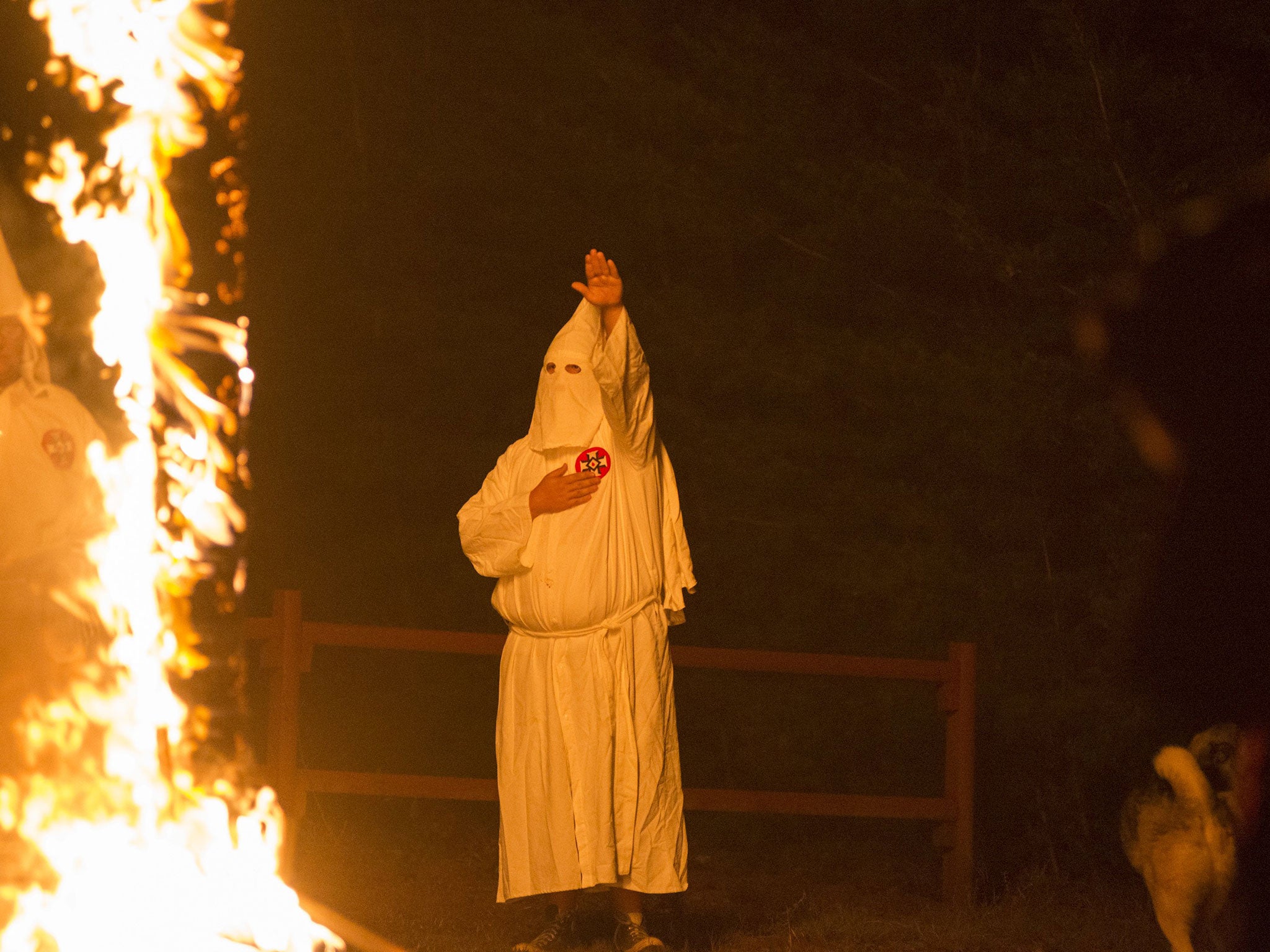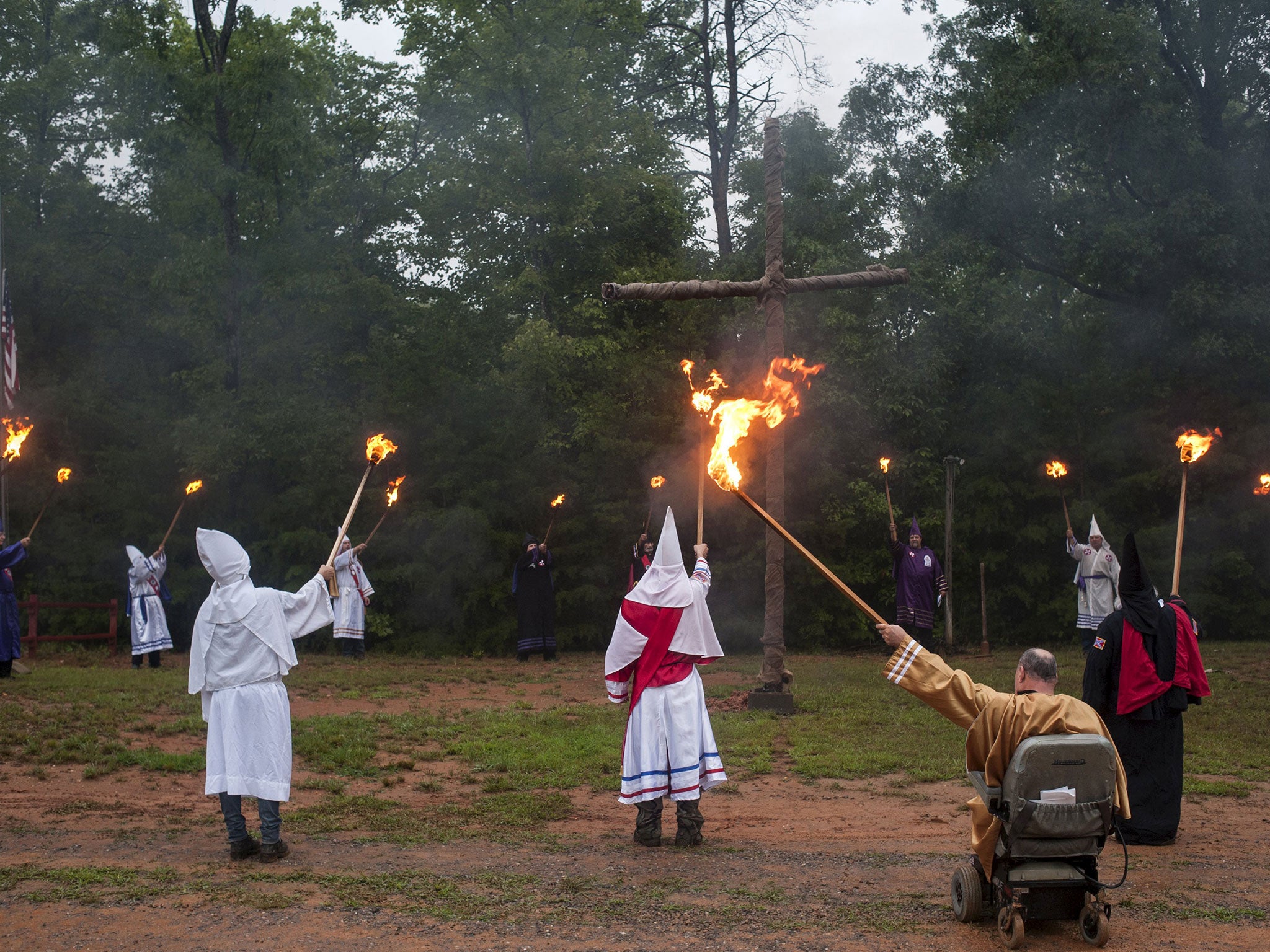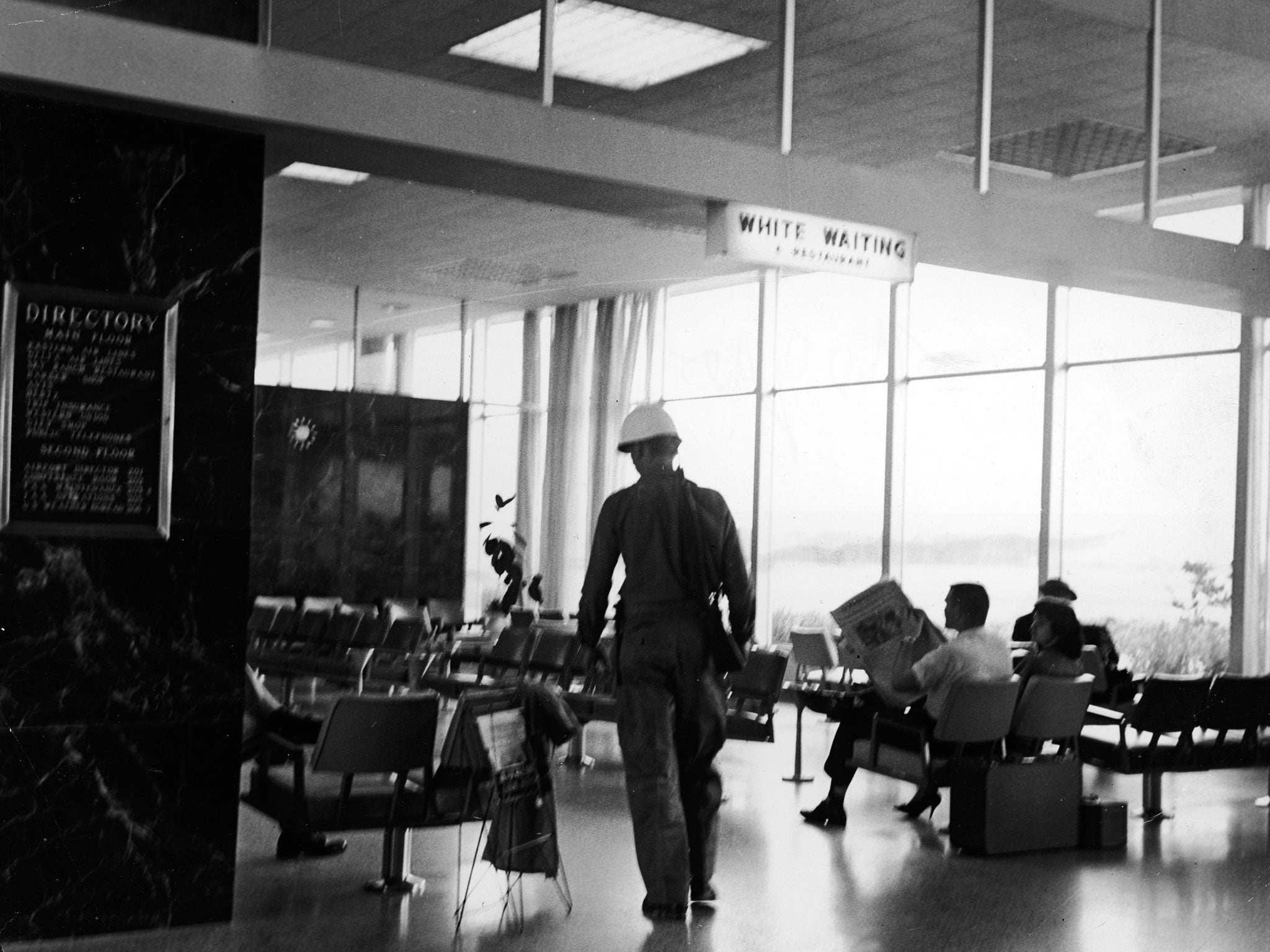
Your support helps us to tell the story
From reproductive rights to climate change to Big Tech, The Independent is on the ground when the story is developing. Whether it's investigating the financials of Elon Musk's pro-Trump PAC or producing our latest documentary, 'The A Word', which shines a light on the American women fighting for reproductive rights, we know how important it is to parse out the facts from the messaging.
At such a critical moment in US history, we need reporters on the ground. Your donation allows us to keep sending journalists to speak to both sides of the story.
The Independent is trusted by Americans across the entire political spectrum. And unlike many other quality news outlets, we choose not to lock Americans out of our reporting and analysis with paywalls. We believe quality journalism should be available to everyone, paid for by those who can afford it.
Your support makes all the difference.We've known for a few weeks now that the Klu Klux Klan has been busy.
Within days of the church shooting in Charleston, the group appears to have blanketed neighborhoods in communities as far flung as Orange County, California and at least one in North Charleston, a nearby incorporated city with its own recent race-related challenges. The flyers included language "assuring" residents of the Klan's presence and protection.
But this week, the KKK has made some of its plans known when it confirmed the group will rally outside the South Carolina statehouse. At issue: Last week's move by state lawmakers to remove the Confederate flag from statehouse grounds.
The KKK has always flared or flexed its muscle at points of challenge – real or imagined – to a social order that puts white Americans first. Conversely, its public presence and influence has waned at moments when this dominance was most secure. And it's in that context – rather than America's now almost reflexive suspicion about publicity seeking and empty symbolism – that both the KKK rally and the flag removal that set it in motion should really be understood.
Doubt that? Well, consider the Klan's history and its relationship to the Confederate cause. And, of course, keep those pictures and the words of folks who brought out their confederate flags to, "greet," Obama this week in Oklahoma.
In December 1865, just eight months after the Confederate Army's surrender, a group of six men gathered in Pulaski, Tennessee. Disillusioned by the loss of the war and what they saw as freed slaves living and behaving above their station, these former Confederate soldiers were also angry, James W. Loewen, the author of three books about race, politics and violence in American life, told me. (In case you are wondering, Loewen, a historian, produced "The Confederate and Neo Confederate Reader," the best-selling "Lies My Teacher Told Me," and,"Sundown Towns.")
Union army occupation in most of the South was only part of what bothered these men. There were also ongoing federal efforts to help freed slaves establish their economic lives and reunite the members of just-freed slave families once sold off and separated like spare parts.
To these men, this was pushing the country toward social conditions they considered intolerable. So, they revived a slavery-days tradition of doing night-time patrols on horseback. And since they often flouted the law during those rides -- beating, intimidating and sometimes torturing then murdering blacks, Jews, Catholics and the small numbers of white Protestants who supported the reforms -- they took steps to shield their identities. Gradually those disguises came to include the elaborate hoods and robes most people associate with the KKK.
By 1870 the country around them had ratified the Fourteen and Fifteenth Amendments, granting all blacks full citizenship and black men voting rights. Soon black and white Republicans claimed victories in some state and federal elections in the South. Small and large bands of KKK -- known by a variety of names in different parts of the South -- proliferated, wildly.

They claimed that their presence was essential to defend white rights and that white lives were themselves imperiled wherever reaches for racial equality made gains. The KKK's specialty, their key recruiting and support-building tool: making white Americans feel they were under siege.
Then two key things happened.
In 1890, Mississippi passed a state constitutional amendment making county clerks the arbiters of who was eligible to register and vote. With almost no exceptions, blacks were not. The Klan, other organized groups of white supremacists and many white elected officials, mostly Democrats, throughout the South reinforced that code with threats, arrests and violence. And the federal government did not intervene, as it had before. By 1907, almost every other Southern state had passed its own voter suppression amendment.
Around this time, men who Loewen calls Neo-Confederates (remember, women did not have the vote until 1920) won elected offices and took over at the helms of major civic organizations. These men started making a regular public display of Confederate symbols like the battle flag. The idea that the Civil War was a conflict about states rights also gained real traction around this time.
And, not surprisingly, the then nearly all white Democratic party gained almost total domination in elected offices in the South. They used that to block almost anything approaching a civil rights bill in Washington, D.C. (At this point, in American history, most blacks who managed to register and about 1/4 of whites in the South supported Republicans).
The war, as far as many Southern whites were concerned, had been won. Jim Crow laws and related social practices metastasized. The Klan and its public presence receded, and groups with more palatable names and less overtly violent habits like the Conservative Citizens Council stepped into the light. (That organization should, by the way, sound familiar since it has been an issue in the 2016 campaign.)

This does not, of course mean violent supremacy went away. By 1950, those groups and others not directly affiliated with the Klan had lynched or facilitated the lynching of nearly 4,000 African Americans. Still, a decade later, the long-growing pro-civil rights resistance movement in the South had scored too many legal victories in federal courts for things to remain the same, David Cunningham, a Brandeis University sociologist who studies racial conflict and wrote the book, "Klansville USA," told me.
And, the Klan roared back again. Only this time, the Klan's modus operandi required some slight re-calibrations.
By the 1970s, the KKK could no longer count on the idea that white Americans anywhere were almost universally dubious about civil rights or opposed to them outright. So, instead of going into communities confronting, killing and intimidating people, the KKK got good at something else.
The organization's rising stars, like David Duke -- who in the late 1980s and early 1990s unsuccessfully ran for President as a Democrat, then as a Republican and later sought Congressional and state offices -- figured out how to spot a moment or place pulsing with racial tension. Then, Duke and others like him, made a practice of taking the KKK's promises of white protection and empowerment there. That's why the Klan was in Boston in the 1970s just after federal courts mandated a busing program to create integrated schools.
And this, of course, brings us to today. The Klan has the sense that the corner of white America feeling threatened, displaced or somehow imperiled has gotten a little more crowded. Some people will say it isn't. But, then again, look at the headlines around voting, schools, elections and policing.
Copyright The Washington Post
Join our commenting forum
Join thought-provoking conversations, follow other Independent readers and see their replies
Comments